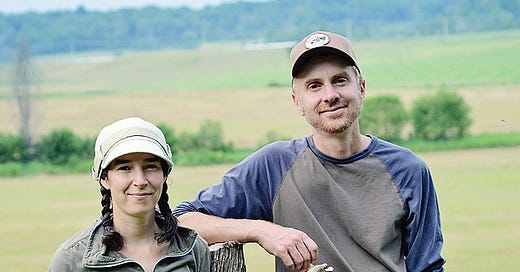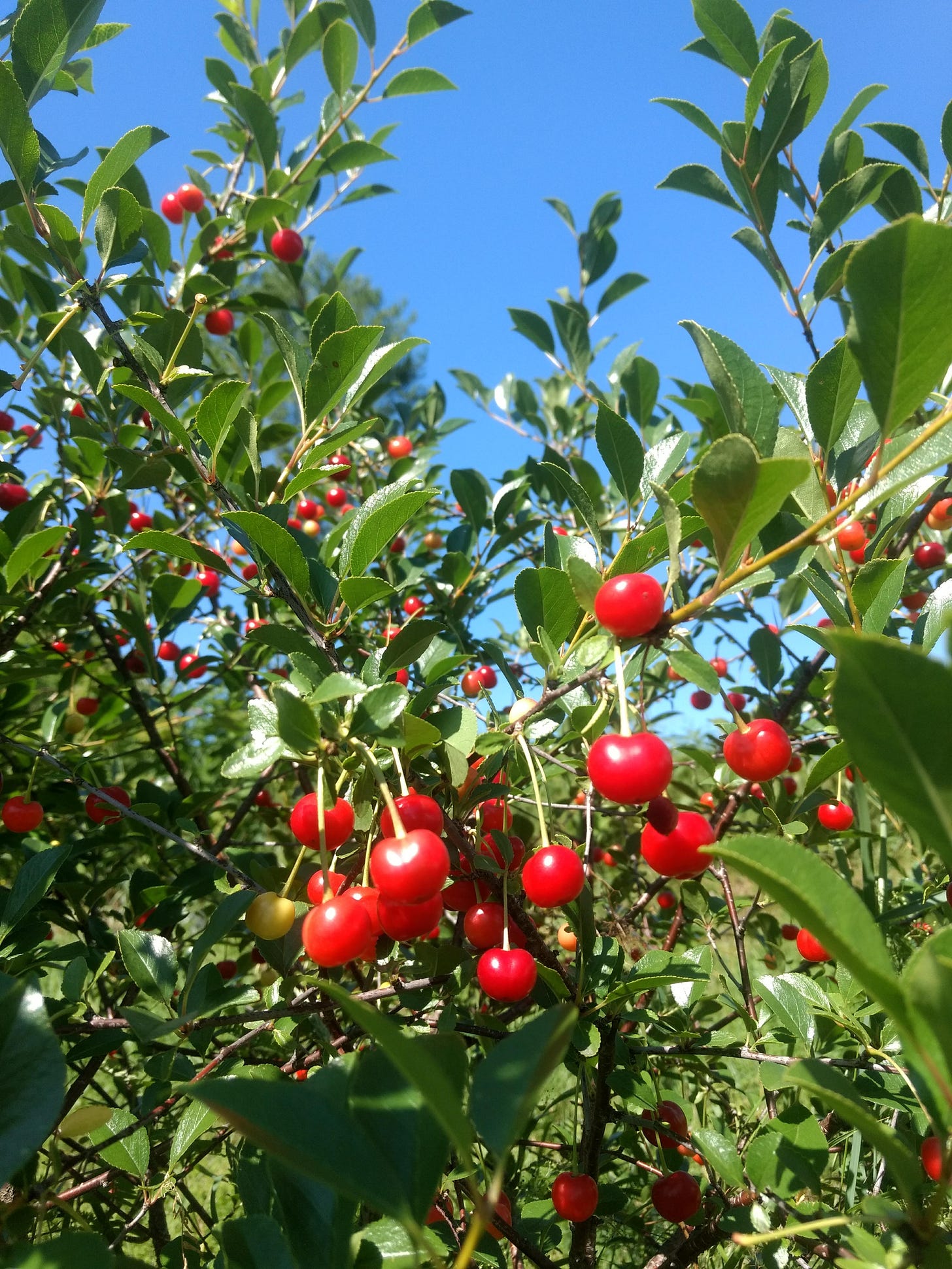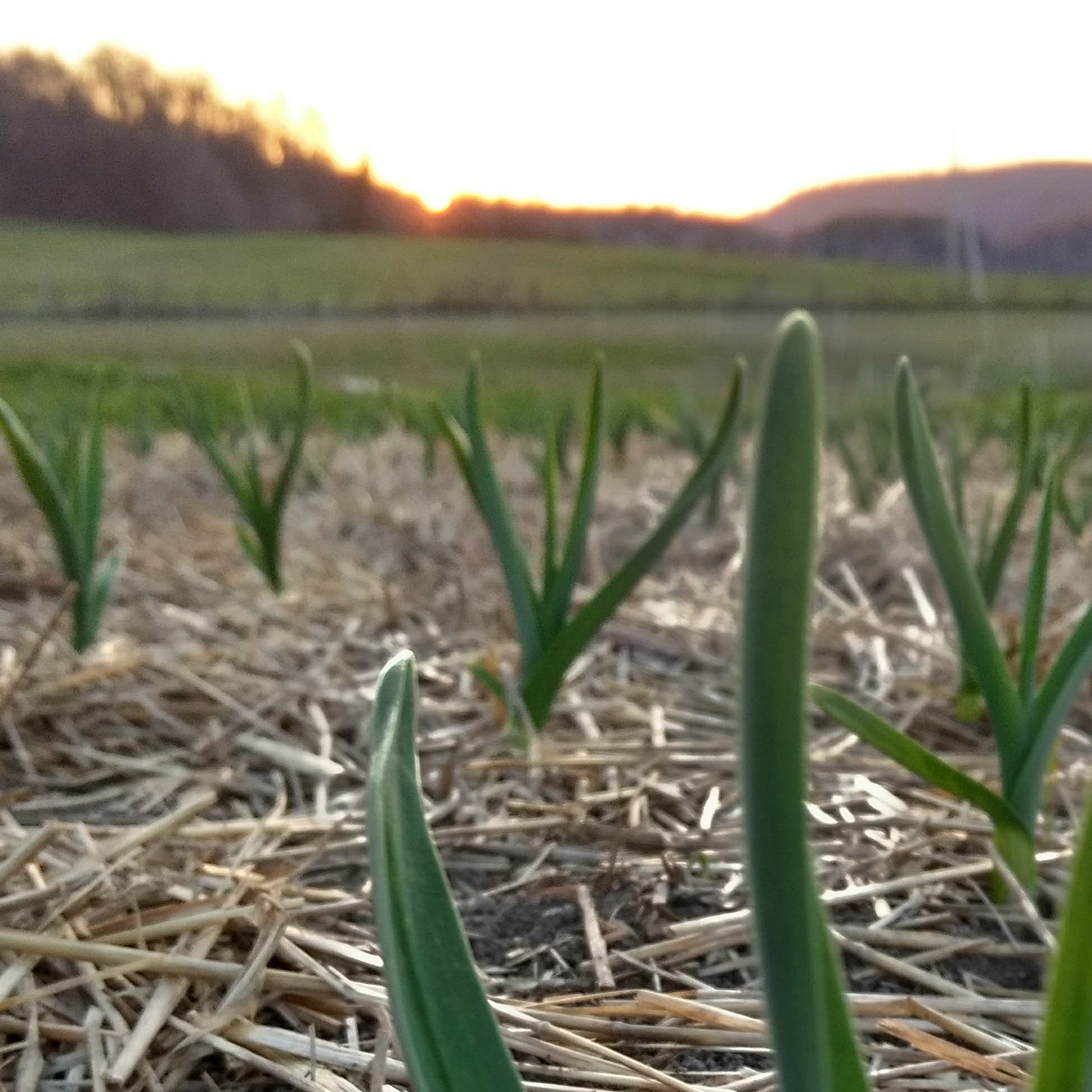Our Odd Farm Business Model - Part 1
If you don't actually grow much, can you still be considered a farmer?
As I said in my last piece, every farm is an expression of the people who run it, and Ferme et Forêt is no different. What is it about Genevieve and my personalities that shaped what our farm has become? And what sort of farm are we?
An admission: I often don’t feel like a real farmer. Real farmers till the ground and plant crops, right? But our only tillage equipment consists of an old two furrow plow we bought for $50 and some barely functional discs gifted to us, and we barely grow anything. The bulk of our income comes from maple syrup, prepared food, and wild harvested crops. How can we be farmers?
Even the few crops we have planted – berries, asparagus, and garlic – are mostly on the decline.
Take berries for example: after trying, with various degrees of success (but with a decided tilt towards the unsuccessful), strawberries, raspberries, currants, elderberries, grapes, blackberries, bush cherries, and haskaps, we’ve come to the conclusion that growing organic berries is not for us. To do successfully, they require a dedicated focus we’re not, for the most part, willing or able to invest. There is a patch of a hundred haskap bushes that are showing promise. And there is another patch of black raspberries, into which we spared no expense, which are doing reasonably well. But even with all that effort, the payoff is relatively low, and the hours spent picking and pruning many. There’s just too many things that can go wrong with berries – not least of which being all the birds and furry four-legged critters who have an uncanny ability to eat up all your work just before you harvest. Our biggest takeaway from these experiments: if you’re going to plant berries, you have to go big (or fence/net them off); otherwise, too great a proportion of your small patch goes to support wildlife rather than your farm’s balance sheet.
Asparagus has been a small but reliable contributor to our farm’s bottom line from the start. It’s never been prolific, but, in a welcome change from the berries, the wildlife seem uninterested in its green shoots (though be bees, happily, love their flowers). We could certainly plant more, as we easily sell all we produce for its short season, but we’ve yet the pull the trigger on expanding that crop.
Garlic is another story. We grew excellent garlic for many years, producing large heads that would keep well for a year. But the new pest of leek moth proved our undoing. At first we dealt successfully with it by keeping the garlic cloaked with a layer of row cover and moving our patch to different areas of the farm each season. Eventually we grew tired of taking the cover on and off every time we needed to weed, and decided to try growing it without the cover. We also limited our growing area to a much smaller space, rotating between two side-by-side plots. At first this worked great, with very little leek moth damage. But what we soon learned, after two or three years of letting our guard down, is that leek moth infestations are cumulative. A few insects successfully reproducing in our garlic one year would translate into many the next. Two seasons ago, about half our crop was infested – meaning that the garlic wouldn’t keep well (we made a lot of it into toum that year). Then last season, instead of bringing the row covers back, we decided to try a solution that has worked for other farmers: a spray of Bt-k (Bacillus thuringiensis var kurstaki), an organically approved bacterium that is toxic only to caterpillars – which the leek moth is in its larvae stage. We applied it three times over the growing season, trying to time it with the life cycles of the leek moth. But perhaps the infestation was too great by this time for this approach to succeed; at harvest, about three-quarters of our garlic was infested. After that, we made the decision to pull the plug on our garlic production. To be honest, we had been looking for an excuse to do so for awhile. The fact that we had been growing high quality garlic had made it hard to give up, but in truth our garlic production always felt like a distraction from other things we were doing. We did make $2,000 to $3,000 a year off of it, but it had not seemed quite worth the effort for awhile. July is a precious month in Canada, and frankly we’d rather use that time to go camping than harvest garlic. And one of our worse experiences ever was planting garlic during a wet fall into sodden, heavy clay in November.
Certainly a feature of our approach to farming has been an allergy to tillage. Genevieve has never had any interest in driving a tractor, and, prior to becoming a farmer, I was indoctrinated against tillage by my permaculture training (see The Rise and Fall of Permaculture (for me) for more on this). I’m more open to it now, although I still consider no-to-low-till to be the ideal. It was this predilection/prejudice against tillage that initially drove us towards perennial crops like asparagus and berries. We then learned the hard way that berries were not for us, so here we are: we’re farmers (allegedly) who don’t actually grow that much.
One thing we do grow a decent amount of, though, is mushrooms. No tillage required there! We’ve so far grown mostly shiitakes in logs, which, for a farm that is two-thirds woods, makes a lot of sense. Last year, we also had great success with a bed of winecaps grown in straw outdoors, and that has inspired us to try other mushroom species too. Consider this the official announcement: in 2025, we will be trying out almond agaricus, lion’s mane, oyster, and even some highly experimental morels!
We have also been trying for years to grow apple trees (see The Feral Orchard Next Door for the backstory on this), so far without much success. Yet there’s just something about apples that keep us trying. Maybe it’s the wonder of how a small seed can grow into a tree that lives longer than a human, producing year after year hundreds of pounds of sweet, aromatic fruit. Maybe it’s the shapely beauty of the malus genus, adorned with its many shades of reddish yellow orbs, like a Christmas tree for the late summer. Maybe it’s the rich, dark brown sweet cider a simple press can extract from even the ugliest fruit, or the pleasant bite of the hard cider the juice almost yearns to become, with only the slightest encouragement from human hands. Or the health-boosting vinegar that hard cider will become with even less effort. While many of the grafted cultivars from nurseries hundreds of kilometres away we have planted have died out, wild growing apple trees continue to flourish around us, evidence of their possibility. Nature is telling us that apples with the right genetics, adapted to our Gatineau Hills, can do well here. And so we continue to try to grow a cider orchard, from seeds gathered from local feral trees, and dream of a future cidery (legally, the apples have to come from your land to open a farm cidery). In the meantime, we’ll continue picking from these trees in the wild on other’s farms, and turning their fruit into the best sweet cider we’ve ever tasted.
Stay tuned for Part 2, coming soon.







This all sounds a little familiar :)
My rule of thumb was to always ensure we were spending our days, time and energy doing the things we wanted to do. Let the dance unfold with intuition and connection. Loved that approach. Bank account did not. And hiring people to follow your momentary whims is a sure way to frustrate people. Rob was better at planning and having solid steps towards production. He was raised a farmer. I was more of an esrth artist. And the animals! Oh how I loved their every move. Behavioral studies and birthing all manner of farm cresture. As a biologist, this was my jam. But the other thing I grew to accept is that farming was all about handling loss and being opportunistic when something wanted to be the star of the year. One year it was potatoes. Another tomato. Wet hay one year. No room for hay the next. When your farm mimics life I think you've caught the sweet spot of connection. Production? The balance sheets preferred outcome. It was not my focus. But Rob understood it in his bones. At the end of the day we chose great ways to spend our days doing things we enjoyed.
Thanks for your thoughts Sean. Always a great read.